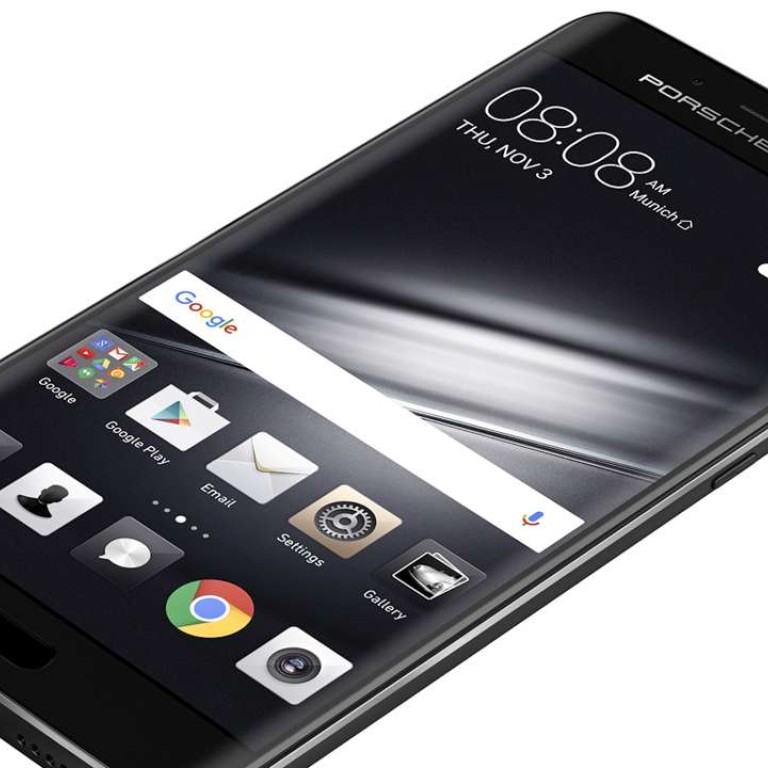
Chinese smartphone maker Huawei catching up on Samsung, Apple: study
Five years of continual growth at Huawei closes the gap between the Chinese manufacturer and market leaders, while establishing it as an internationally recognised and accepted brand
Chinese smartphone maker Huawei managed to gain ground on Samsung and Apple in terms of market share last year, following the problems encountered by the two sector giants, according to the Gartner consultancy group.
Over the year as a whole, the Chinese maker saw its sales leap by 26.7 per cent, while the South Korean and US rivals both saw their sales decline by 4.3 per cent, Gartner says in a study. Its findings echo that of research company IDC, which pointed out this month that the iPhone is losing ground in the mainland smartphone market to domestic brands such as Oppo, Huawei and Vivo.
As result, Huawei was able to increase its share of the smartphone sector to 8.9 per cent in 2016 from 7.3 per cent a year earlier, while Samsung saw its market share shrink by two full percentage points to 20.5 per cent and Apple’s contracted to 14.4 per cent from 15.9 per cent.

“Chinese makers succeeded in winning market share over last year and Huawei now seems to be the main rival to the two giants, even if the gap remains large,” says Gartner analyst Annette Zimmermann.
Among the other Chinese smartphone makers are Oppo, BBK Communication Equipment (with its One Plus and Vivo brands), ZTE, Xiaomi and Lenovo, says Gartner’s report.

Huawei has had continuous growth in sales over the past five years, with 2016 recording a total income of 178 billion RMB, a 42 per cent increase from 2015, according to the company’s vice-president of the Greater China region, Andy Ho Hung-leuk.
According to data released by researcher GFK end of last year, Huawei’s market share exceeded 20 per cent in China for the first time in November. Its global smartphone market share rose to 11.3 per cent, a year-on-year increase of 1.4 per cent. “Huawei is now an internationally recognised and accepted brand,” says Ho.
He adds that 10 per cent of the company’s total income now goes into research and development, and artificial intelligence is a major area of focus. For its smartphones, Huawei collaborates with a diverse range of partners including Microsoft, Leica, Google, Intel and Porsche.
“We’re seeing a very real progression compared with earlier years, when the number three maker and the others had struggled to hold on to a market share of more than four per cent,” Zimmermann says.“Huawei looks likely to strengthen its position again this year.”
In the fourth quarter of 2016 alone, the launch of the iPhone 7 and Samsung’s difficulties with its Note 7 model enabled Apple to take top slot in the market with a share of 17.9 per cent or 77 million units sold.

Samsung sold 76.8 million smartphones in the October-December period, giving it a market share of 17.8 per cent, while Huawei sold 40.8 million phones For a market share of 9.5 per cent.
But it hasn’t been all plain sailing for the Chinese phone maker. Last year Huawei got called out on using a photo not taken by the P9 in an advertisement that promotes the flagship model’s dual-lens camera.
This month a number of MPEG LA’s AVC Patent Portfolio License holders are taking Huawei to court for patent infringement. According to the complaints, Huawei offers mobile phone products, in Germany, that use patent-protected AVC methods without licences issued by MPEG LA, LLC. The suits seek monetary damages and injunctions.
Additional reporting by Kevin Kwong

.png?itok=arIb17P0)
